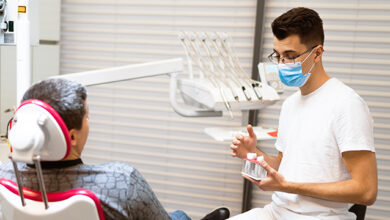Using Cervical Braces and Collars to Manage Neck Pain

If you suffer from persistent neck pain, your doctor may recommend using a specialized brace or collar. These devices provide external support to limit motion and give muscles and joints a rest. Cervical braces and collars come in various designs to target different types of neck problems. Understanding the options available and how to use them properly will allow you to get optimal pain relief.
Types of Cervical Braces and Collars
There are several types of braces designed to limit and control neck movement:
- Soft foam collars – The simplest option constructed of cushioned foam lined with soft fabric. Ideal for minor muscle strains.
- Rigid plastic collars – Solid plastic shells restrict flexion, extension and rotation. Often used after injuries or surgery.
- Cervical traction collars – These apply gentle pulling force on the neck bones, relieving compressed nerves.
- Posture correcting braces – Designed to improve head and neck positioning if poor posture is contributing to pain.
- Heating/cooling collagen collars – Provide hot or cold therapy while supporting the neck muscles and joints.
Consult your doctor or physical therapist to determine which style of brace offers the most appropriate type and level of support.
Benefits of Using a Cervical Brace or Collar
Wearing a prescribed neck brace can provide several benefits for pain relief:
- Restricts range of motion allowing strained muscles and inflamed joints to rest
- Provides stability for neck structures vulnerable to excess movement
- Reduces risk of reinjury during activity and rehabilitation
- Helps correct poor neck posture that contributes to pain
- Cold/hot therapy versions soothe sore neck tissues
- Offers continuous support between doctor, therapy visits
- Allows recovery from neck procedures before resuming normal activity
Using the appropriate brace facilitates healing by immobilizing the neck within a safe range.
When to Wear Your Cervical Brace
Follow usage guidelines from your physician carefully for ideal results:
- During activities causing neck strain to limit painful motion
- While sleeping to maintain neck support and alignment
- After recent neck injury like whiplash to help stabilize area
- Following neck surgery, procedures as directed during recovery
- When performing therapy exercises to avoid overexertion
- During times of flare-ups to get inflammation under control
Avoid overreliance on the brace which may cause muscles to weaken. Use intermittent bracing along with active rehabilitation.
How to Use a Cervical Brace Properly
Using proper mechanics is key to benefiting from cervical bracing:
- Always follow specific doctor or PT fitting instructions for your brace.
- Position brace snugly without impeding circulation or breathing.
- Periodically recheck brace to ensure proper positioning as you move.
- Avoid sudden neck twisting motions while braced to prevent injury.
- Maintain good posture while wearing brace to reinforce proper alignment.
- Gradually decrease use of brace as pain and symptoms subside.
- Perform stretches after removing brace to maintain neck flexibility.
- Report any new numbness, tingling or increased pain to your doctor promptly.
Using your neck brace safely and as directed will facilitate optimal support and recovery.
Precautions When Using a Cervical Collar or Brace
Be mindful of the following risks when incorporating a neck brace:
- May weaken neck muscles if overused due to lack of motion
- Can be hot, uncomfortable and restrict activity if worn for prolonged periods
- Does not address underlying condition causing pain if used in isolation
- May shift out of position causing skin irritation or impaired circulation
- Requires adjustment period to get used to restricted mobility
- Should not be used to completely immobilize neck without physician direction
- Can contribute to depression, reduced quality of life if dependent on brace
Use cervical bracing as a temporary adjunct to active rehabilitation and therapy for the healthiest long-term recovery.
When to Avoid Using a Neck Brace
There are situations where cervical bracing may cause further harm:
- If bracing increases sense of muscle weakness or instability
- For minor neck strains not requiring immobilization
- Without approval and guidance from your treating physician
- If the brace causes new numbness, tingling or circulation issues
- For acute injuries like fractures requiring surgical stabilization
- If collar shifts frequently out of proper positioning
- If brace contributes to depression or fear related to neck injury
Consult your doctor before discontinuing brace usage if it seems to be exacerbating issues. Modifications may allow continued safe use.
Partner Bracing with Other Therapies
For optimal results, incorporate cervical bracing into a comprehensive program:
- Medications – Use along with NSAIDs, muscle relaxants to relieve pain and inflammation.
- Massage – Gently loosen muscles before bracing to prevent cramping.
- Stretches – Stretch regularly after removing brace to increase flexibility.
- Joint mobilization – Manual therapy restores neck mobility impaired by bracing.
- Strengthening exercises – Isometric neck exercises maintain strength while braced.
- Posture training – Use brace to reinforce proper positioning.
Talk to your physical therapist about complementary treatments to avoid overdependence on the brace.
Used judiciously, cervical bracing can provide effective support and stability during neck injury recovery. A combination of bracing and active therapies offers the best path to restored neck function. Work closely with your providers to determine if a brace is right for managing your neck pain.



